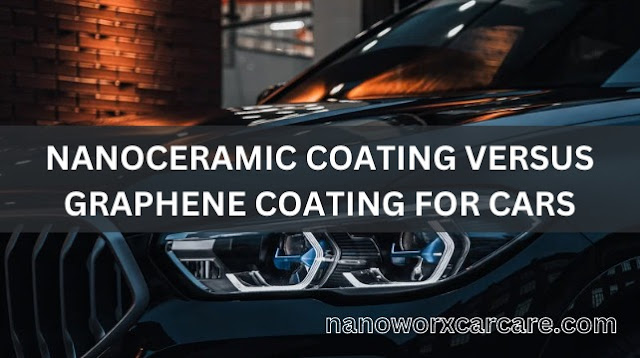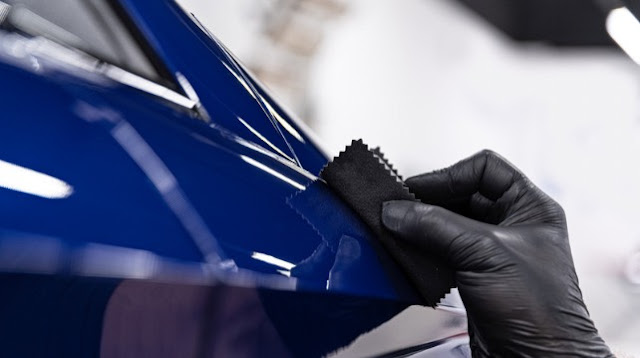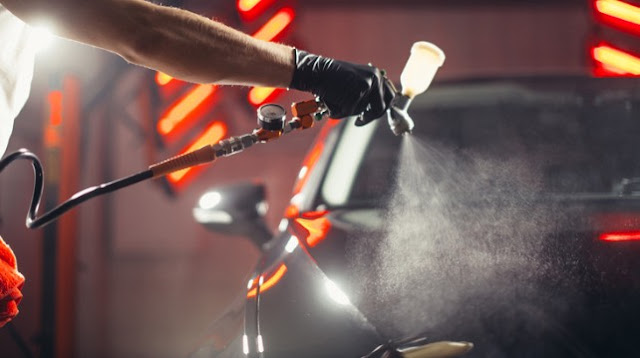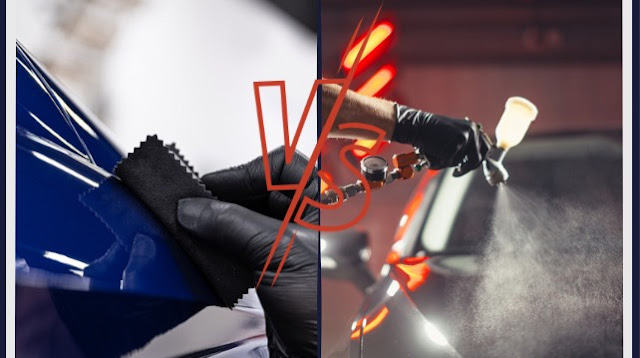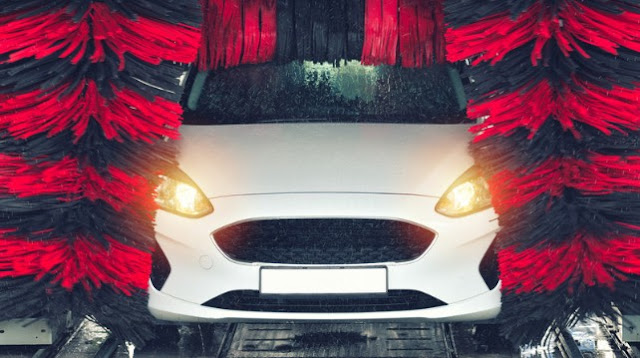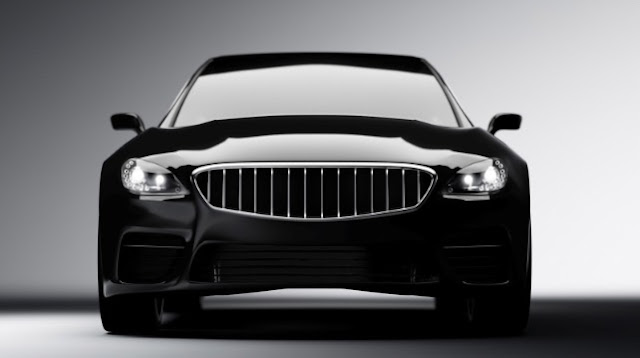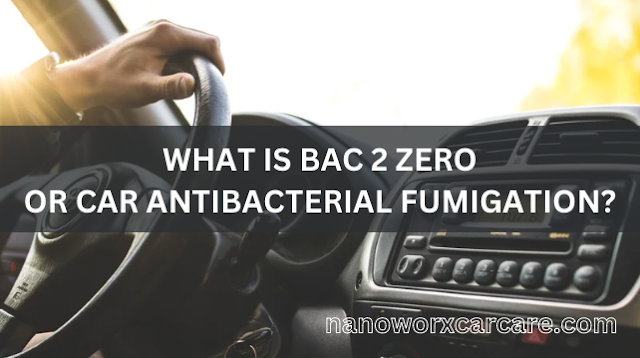NanoCeramic Coating Versus Graphene Coating for Cars
As the battle for the ultimate protective shield heats up, this article delves into the world of NanoCeramic and Graphene coatings. Let's explore their unique properties, application processes, and advantages to help you decide on the best protection for your beloved car.
NanoCeramic coatings are based on nanotechnology, featuring tiny particles that bond with the car's paint at a molecular level. These particles form a protective layer with strong hydrophobic properties, repelling water, dirt, and contaminants.
NanoCeramic Coating provides an enhanced gloss and depth to the paint, giving the car a stunning showroom-like finish. These coatings are known for their durability, with some lasting up to five years or more with proper maintenance.
Graphene, a remarkable two-dimensional carbon allotrope, has made its mark in the automotive industry with its extraordinary properties. Graphene coatings boast exceptional hardness and flexibility, making them highly effective for scratch resistance and impact protection.
Understanding NanoCeramic Coating
NanoCeramic Coating provides an enhanced gloss and depth to the paint, giving the car a stunning showroom-like finish. These coatings are known for their durability, with some lasting up to five years or more with proper maintenance.
Exploring Graphene Coating
The graphene layer strongly bonds with the car's surface, offering robust hydrophobic properties and excellent thermal resistance. With its heat-repelling capabilities, graphene coatings can help reduce the car's surface temperature, enhancing comfort during hot weather.
Critical Differences Between NanoCeramic and Graphene Coatings
NanoCeramic coatings create an attractive gloss and deep shine, with excellent resistance to water and dirt.
On the other hand, graphene coatings prioritize scratch resistance and thermal protection, making them a preferred choice in regions with extreme weather conditions.
Understanding these distinctions can help car owners determine which coating aligns best with their priorities and driving environment.
Application Process and Professional vs. DIY
Professional application ensures uniform coverage and better longevity. However, for those with detailing experience, some DIY kits are available for both coatings, offering a cost-effective alternative.
Advantages and Limitations of NanoCeramic and Graphene Coating
NanoCeramic Coating Advantages
- Long-lasting protection (up to 5 years or more).
- Enhanced gloss and depth to the paint.
- Excellent water and dirt repellency.
- UV protection against paint fading and oxidation.
NanoCeramic Coating Limitations
- Limited scratch resistance compared to graphene.
- Application complexity may require professional help.
- Vulnerable to harsh chemical cleaners.
Graphene Coating Advantages
- Exceptional hardness and scratch resistance.
- Strong thermal resistance for hot weather protection.
- It forms a flexible and strong bond with the car paint.
- It offers a self-cleaning effect, reducing the need for frequent washing.
Graphene Coating Limitations
- Relatively new technology, limited availability in some regions.
- Costlier than traditional NanoCeramic coatings.
- DIY applications can be challenging and may not provide the same level of protection as professional applications.
Maintenance and Care Tips for NanoCeramic and Graphene Coated Cars
Here are some essential tips for caring for NanoCeramic and Graphene coatings:
Maintenance Tips for NanoCeramic Coating
Regular WashingWash your car regularly to remove dirt, dust, and contaminants from the coating's surface. Use a gentle car shampoo and a microfiber wash mitt or sponge to avoid scratching the coating.
Avoid Harsh Chemicals
Avoid harsh detergents, acidic or alkaline cleaners, and solvent-based products on the coated surface. These can degrade the coating over time and compromise its protective properties.
Avoid harsh detergents, acidic or alkaline cleaners, and solvent-based products on the coated surface. These can degrade the coating over time and compromise its protective properties.
Use a pH-Neutral Cleaner
When cleaning bird droppings or stubborn stains, use a pH-neutral cleaner formulated explicitly for NanoCeramic coatings. This ensures effective cleaning without harming the layer.
When cleaning bird droppings or stubborn stains, use a pH-neutral cleaner formulated explicitly for NanoCeramic coatings. This ensures effective cleaning without harming the layer.
Avoid Automatic Car Washes
Automated car washes with abrasive brushes and harsh chemicals can damage the coating. Opt for professional hand-washing car washes to preserve the coating's integrity.
Automated car washes with abrasive brushes and harsh chemicals can damage the coating. Opt for professional hand-washing car washes to preserve the coating's integrity.
Use Soft Microfiber Towels
When drying your car after washing, use soft microfiber towels to avoid marring the coating. Pat the surface gently instead of rubbing vigorously.
When drying your car after washing, use soft microfiber towels to avoid marring the coating. Pat the surface gently instead of rubbing vigorously.
Apply a Ceramic Boost Spray
Periodically, apply a ceramic boost spray to revitalize the hydrophobic properties of the coating. This helps maintain water beading and sheeting, keeping your car cleaner for longer.
Periodically, apply a ceramic boost spray to revitalize the hydrophobic properties of the coating. This helps maintain water beading and sheeting, keeping your car cleaner for longer.
Avoid Parking Under Trees
Tree sap, bird droppings, and falling leaves can damage the coating. Park your car in a covered area or away from trees whenever possible.
Tree sap, bird droppings, and falling leaves can damage the coating. Park your car in a covered area or away from trees whenever possible.
Maintenance Tips for Graphene Coating
Gentle Washing
Use a pH-neutral car shampoo and a soft wash mitt or sponge to wash your car regularly. Graphene coatings are scratch-resistant, but gentle washing prevents unnecessary wear.
Avoid Abrasive Cleaning Tools
Avoid using abrasive brushes or sponges on the coated surface. Stick to soft, non-abrasive materials to maintain the coating's scratch-resistant properties.
Avoid using abrasive brushes or sponges on the coated surface. Stick to soft, non-abrasive materials to maintain the coating's scratch-resistant properties.
Avoid Hot Surfaces
While Graphene coatings offer thermal resistance, avoiding excessive heat exposure is still advisable. Try to park your car in shaded areas during scorching weather.
While Graphene coatings offer thermal resistance, avoiding excessive heat exposure is still advisable. Try to park your car in shaded areas during scorching weather.
Avoid Harsh Chemicals
As with NanoCeramic coatings, avoid using harsh detergents, acidic or alkaline cleaners, and solvent-based products on the coated surface.
As with NanoCeramic coatings, avoid using harsh detergents, acidic or alkaline cleaners, and solvent-based products on the coated surface.
Regular Inspection
Periodically inspect the coated surface for any signs of damage or wear. Address any issues as soon as possible to prevent further damage to the coating.
Periodically inspect the coated surface for any signs of damage or wear. Address any issues as soon as possible to prevent further damage to the coating.
Use Graphene-Infused Detailing Products
To enhance the coating's performance and protection, consider using graphene-infused detailing products designed specifically for maintaining graphene coatings.
To enhance the coating's performance and protection, consider using graphene-infused detailing products designed specifically for maintaining graphene coatings.
Avoid Automatic Car Washes
Just like with NanoCeramic coatings, opt for hand washing or touchless car washes to protect the integrity of the graphene coating.
In the quest for the ultimate protective shield for cars, NanoCeramic and Graphene coatings are formidable contenders, each offering unique advantages. NanoCeramic coatings excel in providing long-lasting gloss, depth, and water repellency, while Graphene coatings prioritize scratch resistance and thermal protection.
Just like with NanoCeramic coatings, opt for hand washing or touchless car washes to protect the integrity of the graphene coating.
NanoCeramic Coating and Graphene Coating in Conclusion
Car owners should carefully consider their needs, driving environment, and budget when choosing from these advanced coatings. Whether opting for a professional application or embracing a DIY approach, the decision to protect one's beloved car with these high-tech coatings promises to elevate the driving experience and safeguard the vehicle's beauty for years to come.

